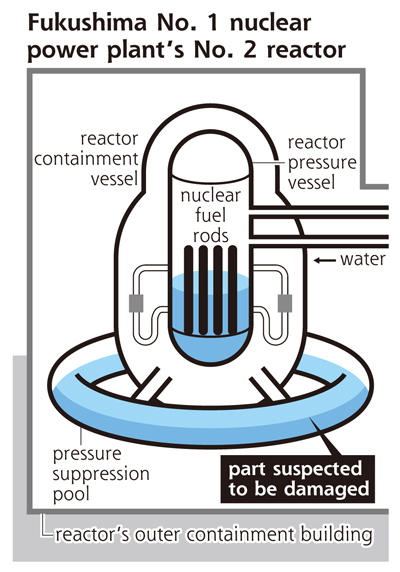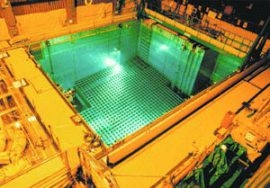A quick word on blocking ads

It looks like you are using an ad blocker. That's okay. Who doesn't? But without advertising revenue, we can't keep making this site awesome. Click the link below for instructions on disabling adblock.
Welcome to the Newschoolers forums! You may read the forums as a guest, however you must be a registered member to post. Register to become a member today!
Sendai, Japan (CNN) -- Japanese Prime Minister Naoto Kan said Tuesday the risk of further releases of radioactive material remains "very high," as crews struggle to contain an increasingly critical crisis at a damaged nuclear plant.
Radiation levels at the Fukushima Daiichi nuclear power plant have increased to "levels that can impact human health," and anyone within a 30-kilometer radius of the plant should remain indoors, Chief Cabinet Secretary Yukio Edano said soon after Kan spoke.
Nearly all of the plant's staff -- some 800 people -- have left, Edano said. Just 50 remain to carry out crucial cooling work.
"There is still a very high risk of further radioactive material coming out," the prime minister said, calling on people to remain calm. "We are making every effort possible so that no further explosion or no further leakage ... would happen."
Kan spoke as a new fire burned at the No. 4 reactor at the damaged Fukushima Daiichi nuclear power plant in northeastern Japan.
An "explosive impact" occurred Tuesday morning at the No. 2 reactor, a day after a hydrogen explosion rocked another reactor, the plant's owner said. Pressure readings indicated some damage to the No. 2 reactor's suppression pool, a donut-shaped reservoir at the base of the reactor containment vessel.
An explosion in a building housing the No. 3 reactor at the Fukushima Daiichi plant injured 11 workers Monday. A similar explosion over the weekend occurred in the No. 1 reactor.
Edano said earlier Tuesday he could not rule out the possibility of a meltdown at the troubled reactors. While sea water was being pumped into the reactors in an effort to prevent further damage, "it cannot necessarily be called a stable situation," he said.
(CNN) -- U.S. Navy personnel are taking precautionary measures after instruments aboard an aircraft carrier docked in Japan detected low levels of radioactivity from the Fukushima Daiichi nuclear plant, the Navy said Tuesday.
The USS George Washington was docked for maintenance in Yokosuka, about 175 miles (280 kilometers) from the plant, when instruments detected the radiation at 7 a.m. Tuesday (6 p.m. ET Monday), the Navy said in a statement.
Personnel will limit outdoor activities and secure external ventilation systems there and at a nearby air facility in Atsugi.
"These measures are strictly precautionary in nature. We do not expect that any United States federal radiation exposure limits will be exceeded even if no precautionary measures are taken," the Navy said.
Workers are scrambling to cool down fuel rods and prevent a full meltdown in three reactors at the earthquake-hit Fukushima Daiichi plant.
Japanese Prime Minister Naoto Kan warned Tuesday that the risk of further releases of radioactive material from the plant remains "very high."
Radioactive steam has been released intentionally to lessen growing pressure in the reactors. But radiation levels at the plant increased Tuesday to "levels that can impact human health," Chief Cabinet Secretary Yukio Edano told reporters.
The announcement came after an explosion at the plant's No. 2 reactor. In addition, Edano said, the building housing the No. 4 unit -- which had been shut down before Friday's earthquake -- was burning Tuesday morning,
On Monday the Navy said it was repositioning ships after tests had detected low levels of radioactivity on 17 U.S. Navy helicopter crew members that had been conducting disaster relief missions in Japan.
Now, where does that leave us?
bad shits going down but the world isn't ending like much of the media is saying.
 This is an update of the situation as of 10 am JST Wednesday 16 March. (For background on events of 15 March and earlier, start with this post and its included links.) Note that this is a blog, not a news website, and thus the following analysis, like all others onBraveNewClimate, is a mixture of news and opinion — but factsremain paramount.
This is an update of the situation as of 10 am JST Wednesday 16 March. (For background on events of 15 March and earlier, start with this post and its included links.) Note that this is a blog, not a news website, and thus the following analysis, like all others onBraveNewClimate, is a mixture of news and opinion — but factsremain paramount.
First, the situation is clearly (but slowly) stabilising. As each day passes, the amount of thermal heat (caused by radioactive decay of the fission products) that remains in the reactor fuel assemblies decreases exponentially. When the reactors SCRAMed on 11 March after the earthquake, and went sub-critical, their power levels dropped by about 95 % of peak output (the nuclear fission process was no longer self-sustaining). Over the past 5 days, the energy in the fuel rods dropped by another ~97 %, such that the heat dissipation situation is getting more and more manageable. But we’re not out of the woods yet, and the reactor cores will need significant cooling for at least another 5 days before stability can be ensured.
Yesterday there appears to have been a fracture in the wetwell torus (see diagram: that circular structure below and to the side of the reactor vessel) in Unit 2, caused by a hydrogen explosion, which led to a rapid venting of highly radioactive fission product gases (mostly noble [chemically unreactive] gases, the majority of which had a half-life of seconds to minutes). It also caused a drop in pressure in the supression pool, which made the cooling process more challenging. However, despite some earlier concerns, it is now clear that containment was not breached. Even under this situation of extreme physical duress, the multiple containment barriers have held firm. This is an issue to be revisited, when the dust finally settles.
Units 1 and 3, the other two operating reactors at Fukushima Daiichi when the earthquake struck, continue to be cooled by sea water. Containment is secure in both units. However, like Unit 2, there is a high probability that the fuel assemblies have likely suffered damage due to temporary exposure (out of water), as the engineers struggled over the last few days to maintain core coolant levels. Whether there has been any melting of the clad or rods remains unclear, and probably will continue to be shrouded in a cloud of uncertainty for some time yet.
 The other ongoing serious issue is with managing the heat dissipation in the spent fuel ponds. These contain old fuel rods from previous reactor operation that are cooling down, on site, immersed in water, which also provides radiation shielding. After a few years of pond cooling, these are transferred to dry storage. The heat in these rods is much less than those of the in-core assemblies, but it is still significant enough as to cause concern for maintaining adequate coverage of the stored fuel and to avoid boiling the unpressurised water. There have been two fires in Unit 4, the first tentatively linked to a failed oil pump, and the second, being of (currently) unknown cause, but the likelihood is that it was linked to hydrogen gas bubbling.
The other ongoing serious issue is with managing the heat dissipation in the spent fuel ponds. These contain old fuel rods from previous reactor operation that are cooling down, on site, immersed in water, which also provides radiation shielding. After a few years of pond cooling, these are transferred to dry storage. The heat in these rods is much less than those of the in-core assemblies, but it is still significant enough as to cause concern for maintaining adequate coverage of the stored fuel and to avoid boiling the unpressurised water. There have been two fires in Unit 4, the first tentatively linked to a failed oil pump, and the second, being of (currently) unknown cause, but the likelihood is that it was linked to hydrogen gas bubbling.
There appears to have been some exposure of this spent fuel, and radiation levels around this area remain high — making access in order to maintain water levels particularly troublesome. Note that apart from short-lived fission product gases, these radiation sources are otherwise contained within the rods and not particularised in a way that facilitates dispersion. Again, the problems encountered here can be linked to the critical lack of on-site power, with the mains grid still being out of action. As a further precaution, TEPCO is considering spraying the pool with boric acid to minimise the probability of ‘prompt criticality’ events. This is the news item we should be watching most closely today.
An excellent 2-page fact sheet on the spent fuel pool issues has been produced by the NEI, which can be read here: Used Nuclear Fuel Storage at the Fukushima Daiichi Nuclear Power Plant (this includes an explanation of what might happen under various scenarios).